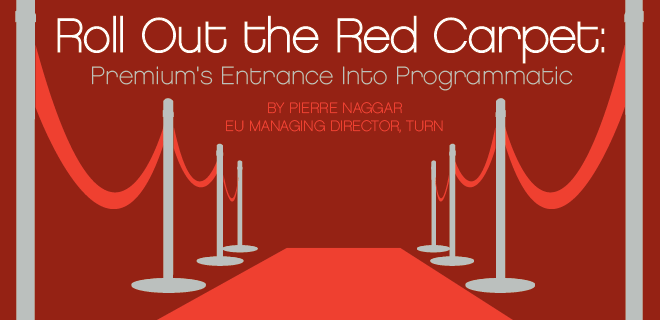
With the growth in digital ad spend via real-time bidding (RTB) validating its place as an established method of media buying, the debate has now turned to the likelihood of premium display inventory coming into the programmatic trading environment at scale.
RTB has proven itself to offer greater efficiencies in targeting and return on ad spend for advertisers who have invested in it. But on the sell-side, publishers still question its ability to maintain let alone increase their CPMs for premium inventory. As a result, premium inventory is still traded in much the same way as it was 10 years ago through direct relationships between the publisher and agency/client, with most of it bought for ‘brand’ campaigns.
So what we have is a chicken and egg situation with regards to which goes first into the RTB market – the brand money or the premium inventory which it requires? Some people might argue that the value of ‘premium’ placements has been heavily eroded by the shift to audience-based buying. The reality, however, is that the majority of brand spend is still reserved for this top-tier inventory.
Programmatic Value for Branding
Although most brand campaigns are planned around audience segments, and advertisers are keen to include data for greater accuracy in targeting, without the sophisticated automation that a data-enabled RTB platform affords, brand campaigns cannot benefit from the real-time insights that have helped performance-based campaigns measure an individual user’s conversion value to a brand.
So why does this matter when brand campaigns are not necessarily about direct online sales generation?
While digital advertising now gets the majority of media spend in the UK when taken as a single channel (30% vs 26% for TV), when you examine brand budgets, the IAB estimates that just 13.5% of digital advertising is brand-based rather than direct response. The growth therefore has largely been in the performance sectors. Brands like the idea of automated buying, but they also want the right type of inventory and the right measurement model that will allow them to run both brand and performance campaigns via RTB.
Pubs: Embrace the Evolution
Whilst the rise in programmatic trading has helped the buy-side gain efficiencies in their spending with greater transparency and control of pricing and placement, publishers have been less enthusiastic about its effect on their bottom line and as a result held back from releasing their premium inventory into the programmatic environment. Publishers can achieve the same operational efficiencies when premium placements with standard formats are made available through RTB versus being sold exclusively via their own sales force.
Having worked for sell-side organisations before, I believe commercial teams should be employed for high-value operations (e.g. take overs, sponsorships etc) as opposed to shifting banners and buttons. All of that can and must be automated. In addition, as demand grows, RTB allows publishers to not only control the price, but also provides them with the opportunity, when properly managed, to increase yields on some previously low-performing placements.
The rise in private marketplaces has no doubt helped shift some control back to the seller and collaborations such as the La Place Media initiative in France are also helping publishers feel more secure about using programmatic trading across their entire inventory. I predict that in 2013, we’ll see more of these initiatives and demand for private marketplace deals will grow significantly.
Measurement Quandary
Finally, if we’re to see an increase in brand spend coming into the programmatic trading environment, there needs to be a more holistic view of measurement across the industry. There has been much discussion around the need to look beyond the “last click,” but a robust attribution model that incorporates cross-channel measurement and engagement metrics in real-time is yet to become a reality.
Nirvana is a system that allows brand and performance campaigns to be measured and valued alongside each other, irrespective of whether the creatives ran on the same channel or cross-channel. For example, a brand video ad which the user interacted with but did not click, could be shown to have impacted equally on the final conversion as a retargeted product-led banner on a social site which was the ad the user finally clicked and converted after. (In this example, the brand campaign instigated the site visit, which in turn triggered the re-targeting campaign.)
RTB technology has the capability to offer so much, but as an industry we need to challenge ourselves more. Until we can offer brand advertisers the premium placements they value with the performance and metrics that digital promises and the targeting benefits of programmatic trading, we’ll still lag behind in achieving the same levels of brand spend as we see in TV.
Pierre Naggar is EU managing director at www.Turn.com.